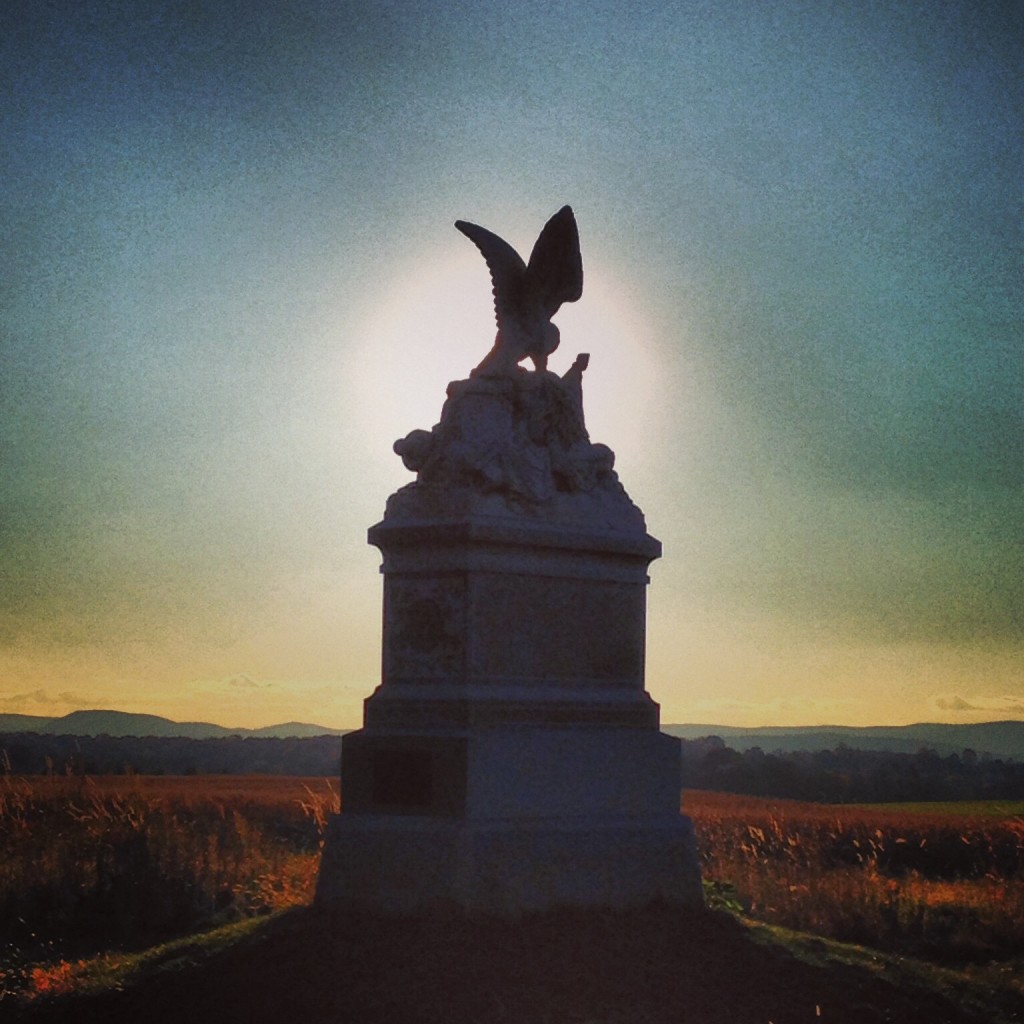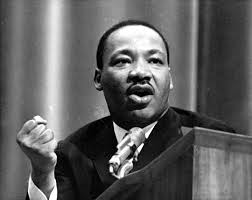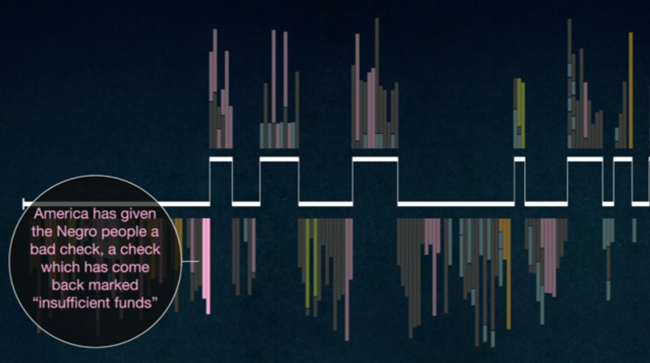The Language of Leadership: Think Pink!
We spend several sessions discussing the “language of leadership” at Gettysburg, arguing that the leader has a “palette” of words by which he paints visions in people’s minds. Our primary examples were Abraham Lincoln arguing for “new birth of freedom” at Gettysburg in 1863 and Martin Luther King, Jr arguing for “that dream of freedom was still unrealized” 100 years later. ”
Nancy Duarte, on her blog, analyzed MLK Jr’s “I have a dream” speech and found that the speech was “not only literarily brilliant, but its structure follows a presentation form perfectly.” A presentation form (as in the diagram below) traverses back and forth between what is and what could be, ending in MLK’s speech with an description of the new bliss of equality.
In a previous post, I commented on Lincoln’s similar eschatological flow:
Lincoln’s leadership (as well as his speeches) seemed structured by an historical/existential/eschatological flow. In other words, he led from a sense of “what was right and wrong” about the past, from “what could be true in the future” while retaining an unrelenting commitment to “act in the present.”
Perhaps as we cast vision for movements everywhere, we need to adopt a similar form. We cast an “above the line” vision by traversing back and forth between “what is” and “what could be.” If you look at the speeches of leaders who have brought real change thru their words, you’ll see this tension of “what is” and “what could be.”
For example, here’s what I trying out.
Today there are over 1600 community colleges where 60% of all colleges students in the US begin their college education. Right now, there are very few “transformational” movements on these 2 year campuses. The rapid turnover of students is most often blamed. What if, however, we tapped into the natural leadership potential and student orientation of the faculty teaching at these schools? What would happen if we found and encouraged faculty at these CCs to become missional team leaders? It’s happening already. Take a look at facebook.com/cru@communitycolleges.
Nancy Duarte, also found that MLK Jr’s “I have a dream” speech in terms of rhetorical devices, coloring each block of text between the crests and peaks of “what is and what could be.” She color-coded the blocks of text to highlight MLK’s assorted rhetorical devices: blue stands for repetition; pink for metaphors; orange for political references and green for familiar literature and songs, from Scripture to “America”
You can see that there’s lots of blue and green here, especially at the end as he is riffing on “America.” But what’s really fascinating is how much pink you’ve got everywhere. We know that MLK was an expert at using words as a paintbrush…but seeing this speech in graphic form, you can see how often he resorted to “visual language” to hammer home his point. Leaders, in other words, when they speak, they “think pink” — metaphorically speaking.
As we discussed at Gettysburg, Aristotle once reminded us: “the greatest thing of all is to be master of metaphor.”
Think pink.



